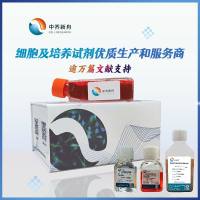cDNA sequencing based on PCR and random shotgun cloning
互联网
The following is a rapid and efficient method for sequencing cloned cDNAs based on PCR amplification (14), random shotgun cloning (1,3,15), and automated fluorescent sequencing (16). This method was developed in our laboratory because once the sequence of a genomic DNA containing cosmid is obtained and putative exons are predicted, the corresponding cDNAs should be sequenced in a timely manner. However, the presently implemented directed cDNA sequencing strategies, i.e. primer walking (17) and exonuclease III deletion (18), are both time consuming and labor intensive, while the alternative, i.e. randomly shearing the intact plasmid followed by shotgun sequencing (1,3,15), leads to a significant number of clones containing the original cDNA cloning vector rather than the desired cDNA insert.
This is a PCR-based approach where the "universal" forward and/or reverse priming sites were excluded from the resulting PCR product by choosing a primer pair that lay between the usual "universal" forward and reverse priming sites and the multiple cloning sites of the Stratagene Bluescript vector. These two PCR primers, with the sequence 5'-TCGAGGTCGACGGTATCG-3' for the forward or -16bs primer and 5'-GCCGCTCTAGAACTAG TG-3' for the reverse or +19bs primer, now have been used to amplify sufficient quantities of cDNA inserts in the 1.2 to 3.4 kb size range so that the random shotgun sequencing approach described below could be implemented.
Protocol
1. Incubate four 100 ul PCR reactions, each containing approximately 100 ng of plasmid DNA, 100 pmoles of each primer, 50 mM KCl (dilute from 1 M stock), 10 mM Tris-HCl pH 8.5 (dilute from 1 M stock), 1.5 mM MgCl2 (dilute from 1 M stock), 0.2 mM of each dNTP (dilute from 100 mM stock), and 5 units of PE-Cetus Amplitaq in 0.5 ml snap cap tubes for 25 cycles of 95oC for 1 min., 55oC for 1 min. and 72oC for 2 min. in a PE-Cetus 48 tube DNA Thermal Cycler.
2. After pooling the four reactions to obtain sufficient quantities of PCR product for the subsequent steps the aqueous solution containing the PCR product is placed in an AeroMist nebulizer, brought to 2.0 ml by adding approximately 0.5 to 1.0 ml of glycerol, and equilibrated at -20oC by placing it in either an isopropyl alcohol/dry ice or saturated aqueous NaCl/dry ice bath for 10 min.
3. The sample is nebulized at -20oC by applying 25 - 30 psi nitrogen pressure for 2.5 min. Following ethanol precipitation to concentrate the sheared PCR product, the fragments were blunt ended and phosphorylated by incubation with the Klenow fragment of E. coli DNA polymerase and T4 polynucleotide kinase as described previously. Fragments in the 0.4 to 0.7 kb range were obtained by elution from a low melting agarose gel.









